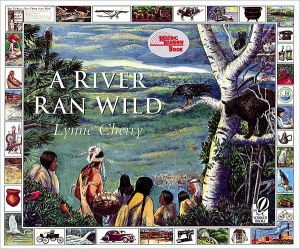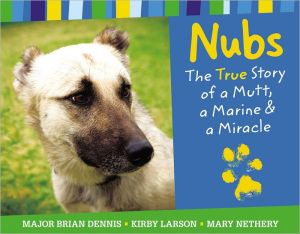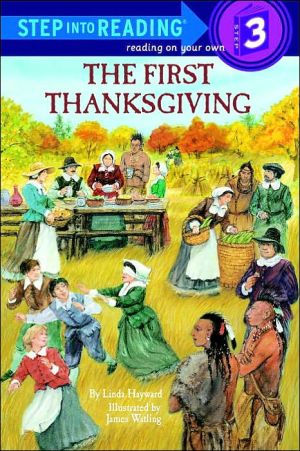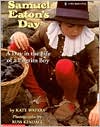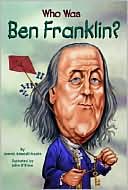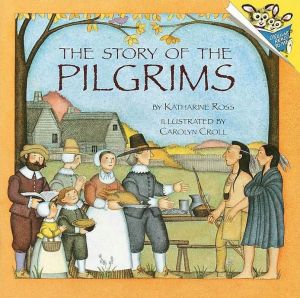A River Ran Wild: An Environmental History
From the author of the beloved classic The Great Kapok Tree, A River Ran Wild tells a story of restoration and renewal. Learn how the modern-day descendants of the Nashua Indians and European settlers were able to combat pollution and restore the beauty of the Nashua River in Massachusetts.\ \ \ An environmental history of the Nashua River, from its discovery by Indians through the polluting years of the Industrial Revolution to the ambitious clean-up that revitalized...
Search in google:
A remarkable environmental success story!Publishers WeeklyCherry traces the ecological evolution of New England's Nashua River--how it was respected by generations of Indians, polluted and ultimately deadened in the wake of the industrial revolution and restored in recent years through the efforts of concerned citizens. She delivers this message with a heavier hand than she used in The Great Kapok Tree ; her writing is more complex and ponderous, and less accessible and inviting, than in the earlier work. While this book provides a solid history, it does little to bring the issues or pivotal figures to life. The colorless account of the citizens' battle to clean up the river, for example, reflects little of the passions and energy involved. Though not her best work, Cherry's illustrations tell the story more effectively. (One allegorical painting of an Indian chief's head--superimposed on trees--crying into the river, however, jars with the naturalistic style.) Of particular benefit are the handsome, intricately detailed borders that surround the text: depictions of various period artifacts provide artistic interest and added information. Ages 6-10. (Mar.)
\ From the Publisher"An important, intelligently presented story."—Kirkus Reviews\ "Readers will be moved to consider their personal impact on the environment and what they can do to make a difference."—Booklist\ "An important contribution to literature."—School Library Journal\ \ \ \ \ Publishers Weekly\ - Publisher's Weekly\ Cherry traces the ecological evolution of New England's Nashua River--how it was respected by generations of Indians, polluted and ultimately deadened in the wake of the industrial revolution and restored in recent years through the efforts of concerned citizens. She delivers this message with a heavier hand than she used in The Great Kapok Tree ; her writing is more complex and ponderous, and less accessible and inviting, than in the earlier work. While this book provides a solid history, it does little to bring the issues or pivotal figures to life. The colorless account of the citizens' battle to clean up the river, for example, reflects little of the passions and energy involved. Though not her best work, Cherry's illustrations tell the story more effectively. (One allegorical painting of an Indian chief's head--superimposed on trees--crying into the river, however, jars with the naturalistic style.) Of particular benefit are the handsome, intricately detailed borders that surround the text: depictions of various period artifacts provide artistic interest and added information. Ages 6-10. (Mar.)\ \ \ Children's Literature\ - Susie Wilde\ This book documents how one woman, Marion Stoddart, organized her community to rescue the proud Nashua River. Lynne Cherry builds compassion for the Nashua through historical reflection, and the river becomes a protagonist that readers care about. Her detailed pictures offer full-page counterpoints of early glory where the Nashua runs clear amid a landscape of lush forests and respectful Native Americans to fiery orange waters set against polluting mills. Sadness is expressed by spirits who once loved it, until people join forces to return it to its former beauty. Cherry's books are welcomed by parents and educators alike and she continually learns that her books are making a difference to preserve the environment.\ \ \ \ \ Children's Literature\ - Debra Briatico\ Hundreds of years after the Indians first settled by its banks, the Nashua River in New England became polluted by the toxic wastes of nearby factories and towns. This environmental success story uses insightful narrative and panoramic paintings to describe the history of the Nashua River and illustrate the committed efforts of a few dedicated individuals who restored the waterway to a healthy state. Lynne Cherry's magnificent artwork perfectly complements this inspirational tale.\ \ \ \ \ School Library JournalGr 1-4-- In the 15th century, when native people first settled on the banks of the river now called the Nashua, it was a fertile and beautiful place. By the 1960s, the river valley had been ravaged by many years of serious pollution , and fish, birds, and other animals were no longer seen in the area. Through the efforts of Marion Stoddart and the Nashua River Watershed Association, laws were passed that resulted in the restoration of this river and the protection of all rivers. The author gets high marks for documenting the negative impact of industry on the environment and for highlighting the difference one determined person can make. However, young readers lacking historical background need more facts and dates than are included here. Cherry uses borders on pages that detail, for example, some of the inventions conceived in the 19th century; inexplicably, most are labeled but only some are dated. Her note and the maps on the endpapers, which include a timeline, also help to place the events in context. The watercolor and colored-pencil illustrations are sweeping in their subject matter and adequately convey the physical deterioration of the watershed. However, one picture is misleading; although all the animals depicted live in this habitat, they would not all be seen together. The current concern over the environment will make this a sought-after title, since it is brief enough to read aloud to groups of children. With assistance from informed adult readers, it makes an important contribution to literature on water pollution. --Ellen Fader, Westport Public Library, CT\ \
